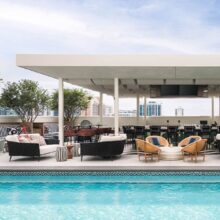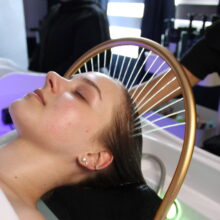The Pioneer Spas: Rancho La Puerta
- Published: Sunday, October 2nd 2011
- in Living Well
Even back in 1940, when Rancho La Puerta first welcomed guests to its Baja, California, location, there was a need to flee the noise of hectic city life and acknowledge nature, health and wellbeing in a pristine setting. Thankfully, Rancho La Puerta still remains committed to bringing people back to nature and their core selves.
Return to the Land
Originally named Essene School of Life, the 3,000-acre Baja California retreat looked to the Essenes, a Jewish Sect, as the model for returning to the simple life, says owner Deborah Szekely. “We were in many ways like a health commune, because people would work two and a half hours and the rest of the time would do all these natural things,” she remembers. “We had an organic garden even in 1940, and we had our own goats and we milked them and we made our own bread—all that lovely stuff. The Section of Education in Mexico City said if we call ourselves a school, though, we had to have a formal curriculum, so we changed the name very promptly.”

In about 1946 or 1947, the name of the retreat changed to its Spanish land-grant name, Rancho La Puerta. “We charged $17.50 a week, bring your own tent,” Szekely says. “At that time, it was revolutionary; in France, they called us avant-garde, and in the States, they called us a cult since we were doing something totally different, but we really believed in it and still do”
Decades later, Rancho La Puerta has received a host of awards and accolades, including most recently World’s Best Destination Spa in Travel + Leisure’s 2010 and 2011 readers’ polls. “Seventy-one years of hard work,” Szekely reflects. “It is still to many, many people a deeply religious experience in that they get down to their own inner selves.”
Rancho La Puerta Creates the Basic Spa Day

According to Szekely, Rancho La Puerta also created the typical spa day that most destination spas now use. “When we started the Ranch, I had been out of high school not that many months, so I followed a program where every 50 minutes, you did something else. And that basic spa day is still what is used around the world,” Szekely says. “Also, having a heavier program in the morning, when the mental juices are higher, and easier program in the afternoon—you know, it’s sort of balanced with nature.
While the typical structure of a spa day has not changed, society and the demands on people have, Szekely points out. More than ever, it’s important to find tranquility and start listening to our bodies. “There’s so little respect for the body and support for the body, and so we continue to do a better and better job teaching people the magic of the body,” offers Szekely. One way the Ranch does this is through its extensive fitness program, comprising 60 classes and 13 large gyms.
While Rancho La Puerta’s teachings have spanned the test of time, it plans on continuing to do what it has been doing for the past 70-plus years, only better. “The Ranch cannot ever really change. It’s like a person,” Szekely explains. “It has settled into itself, and it gets better all the time because we keep on investing money and making it better, and our gardens are spectacular, which are under the care of my daughter, who is a landscape designer and a botanist. We have a real cooking school and we have 52 weeks of the top chefs in the nation who come teach at our cooking schools, plus our resident chef who taught cooking for eight years at the Culinary Institute of America. So we teach our guests that this is not a program, but a way of life.”
Szekely adds that the spa industry as a whole came to be because it was needed—that for some people, it summons in various ways the feeling that there is something larger than one’s self. “I think if you learn how to care for your body, you get to care for the earth and care for your fellow man, so it’s a very important role we play,” she says. “[Spas are] needed more and more, and the Ranch will continue to lead the way because we keep studying and reading and with every bit of knowledge, we add to it.”


